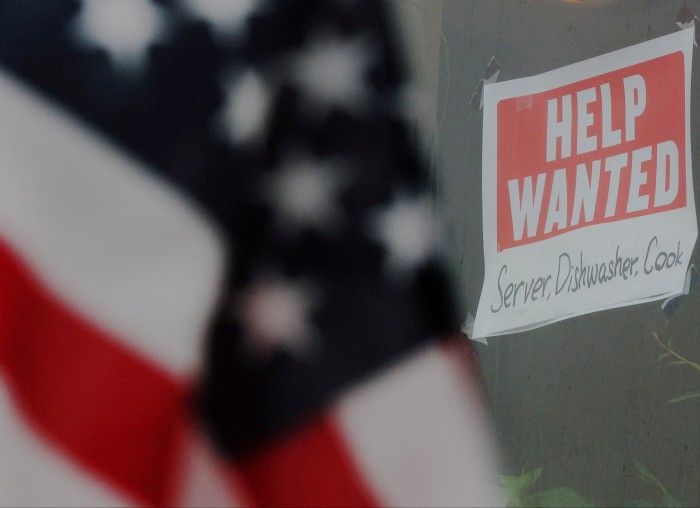Unlock the Editor’s Digest for free
Roula Khalaf, Editor of the FT, selects her favourite stories in this weekly newsletter.
Alphaville is old enough to remember when a 100k non-farm payrolls number was a bit of a dud. But since “liberation day” the US has singularly failed to get clear even this lowly hurdle.
Whether sluggish jobs growth is a signal that we’re on the brink of a recession or a sign that the AI productivity revolution is here is therefore one of the most urgent questions in US macroeconomics policy today.
Goldman Sachs has previously said that we probably won’t really know until we’ve been through a recession. That’s because companies mostly shed jobs in downturns, and tend to focus on essential jobs in the recovery. However in the meantime the investment bank’s economist Elsie Peng has taken a crack at understanding the slowdown in job creation.
She estimates that a downshift in immigration is the main culprit:
We estimate that the contribution to monthly labor force growth from immigration has fallen from 90k at the start of the year to 40k in August, and that monthly employment growth in industries relying heavily on immigrant workers has declined by 30k since the start of the year. This suggests that part of the recent job growth slowdown is due to a less concerning slowdown in labor supply growth.
Much of this comes from a fall in unauthorised immigrant labour, with GS’s estimates of payroll growth for industries in which more than 10 per cent of workers are unauthorised immigrants shrinking from around 20-40k per month in 2024 to a contraction of more than 10k in August.
The pullback in government hiring has taken a further 20k off the monthly total, with job growth slowing from 30k/month to 10k/month. Tariffs and general uncertainty about whether the US may enter a recession in the next year are also weighing on hiring, Goldman reckons.
What about AI though?
Despite poring through the data, Peng finds “little empirical evidence that increased AI adoption or even the prospect of adoption is weighing meaningfully on the overall labor market.”
She gives us bubble charts with teeny tiny r-squared numbers to make this point:
 R^2 isn’t quite zero, but it’s not far off. © GS Research, Why Has Job Growth Slowed? Oct 20, 2025
R^2 isn’t quite zero, but it’s not far off. © GS Research, Why Has Job Growth Slowed? Oct 20, 2025
That said, looking at industries like marketing, call centres, graphic design, web search portals, computer system design, and software publishing — where they’d expect disruption to show up first — GS reckon jobs growth is in these sectors running maybe 10k/month lower than pre-pandemic trends.
Learn to code they said. Eek.
 Unemployment for tech workers in their 20s has doubled © GS Research, Jobless Growth Oct 13, 2025
Unemployment for tech workers in their 20s has doubled © GS Research, Jobless Growth Oct 13, 2025
However, while Goldman thinks they can explain the slowdown in jobs growth so far, they don’t expect it to persist — forecasting monthly payroll growth to average at 115k/month in the second half of 2026.
This is in contrast to a number of somewhat more gloomy takes that have emerged around the level of monthly jobs the US economy might be expected to create and get filled.
The Dallas Fed put out a very cool blog a couple of weeks back that walks normies through the process that economists use to estimate the level of the so-called monthly job “break-even” rate. Tl;dr — take your estimate of real-time population growth, work out where we are in the labour force participation cycle, and clean up the data to make sure you’re not including kids, active-duty military personnel etc.
They also provide their own number for the new normal: a lowly 30k/month. 😱

